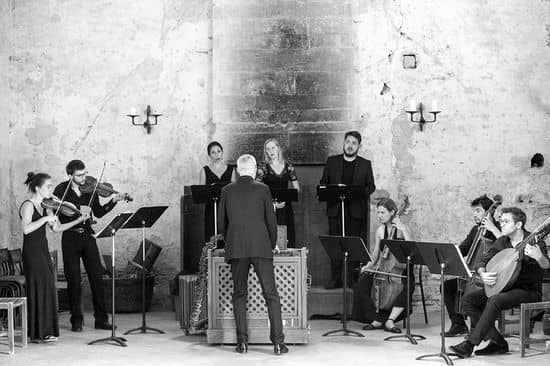Cérémonies de voyage
The court of Louis XIV represents a pinnacle of organization: all bodies of craftsmen, from the most menial tasks of daily life to the most famous craftsmen & artists are gathered around a king like a beautifully tuned clock.
However, the sovereign himself sometimes likes to upset the course: a royal caprice (good weather, the desire to hunt, the bucolic mood) is enough to decide that a day that was supposed to be regulated like music paper in Versailles must finally take place in Fontainebleau or other royal residences…
It was impossible to move all the machinery in the courtyard (furniture, kitchens, etc.) in a few hours. So a service was set up that we could call “flying teams” today. As for the music, for example, of the 80 musicians who played the king’s mass every day, only about 15 of them set off for the new holiday resort! The repertoire did not change: the great motets of the royal chapel were played, but they were transcribed and adapted to the new, smaller number of musicians so that the king could hear his favorite motets wherever he chose to go! We find traces of these “travel” motets in a collection that contains music by Lalande, Couperin and many others. The composition of 3 voices, 2 violins and basso-continue is characteristic. The numerous motets of Charpentier for an equivalent number of voices could have been used as travel motets for his great patron, Mademoiselle de Guise, duchess of Alençon, for her numerous trips to Normandy at the end of the 17th century!
Who says travel, says displacement: and the Great Century is crossed by processions on all sides! All the great cathedrals of course, but also the village churches, the chapels that adorn the hamlets of all the countryside, the fountains, the springs, the age-old trees give rise to processions that are all manifestations of very local cultures: whether religious or secular (for the brotherhoods of craftsmen, for requests for good weather or rain), they often go back to the dawn of time, and are the foundation of the deep identity of each village, of each hamlet.
In these processions, music is very present: it punctuates the event which can last several hours! Sometimes it is the menestriers who officiate: they are local musicians, who also play for balls and village festivals. They generally play instruments of the violin or oboe family. For the great religious places, it is the musicians of the chapter of the cathedral who officiate in procession (song and instruments), either outside or inside the church, with regular stations, alternating the song and the instrumental music.
This music was rarely notated: it was either carried by the menestriers (thus of oral tradition) or improvised, most of the time from the plain chant. Nevertheless, there remains a great witness of these procession musics through the figure of the genius Marc-Antoine Charpentier: the procession musics he notes are even punctuated with indications for the musicians, where we see that we must wait for the bishop to advance to such and such a place before playing such and such a music! It is this music that we will share on the occasion of these travel ceremonies.
PROGRAM
Marc-Antoine Charpentier
Musiques de procession
Supplicatio pro defunctis
Super flumina Babylonis
In odorem ungentorum
Beati omnes qui timent Dominum
Michel-Richard de Lalande
La Grande Pièce royale
François Couperin
Laudate pueri Dominum
